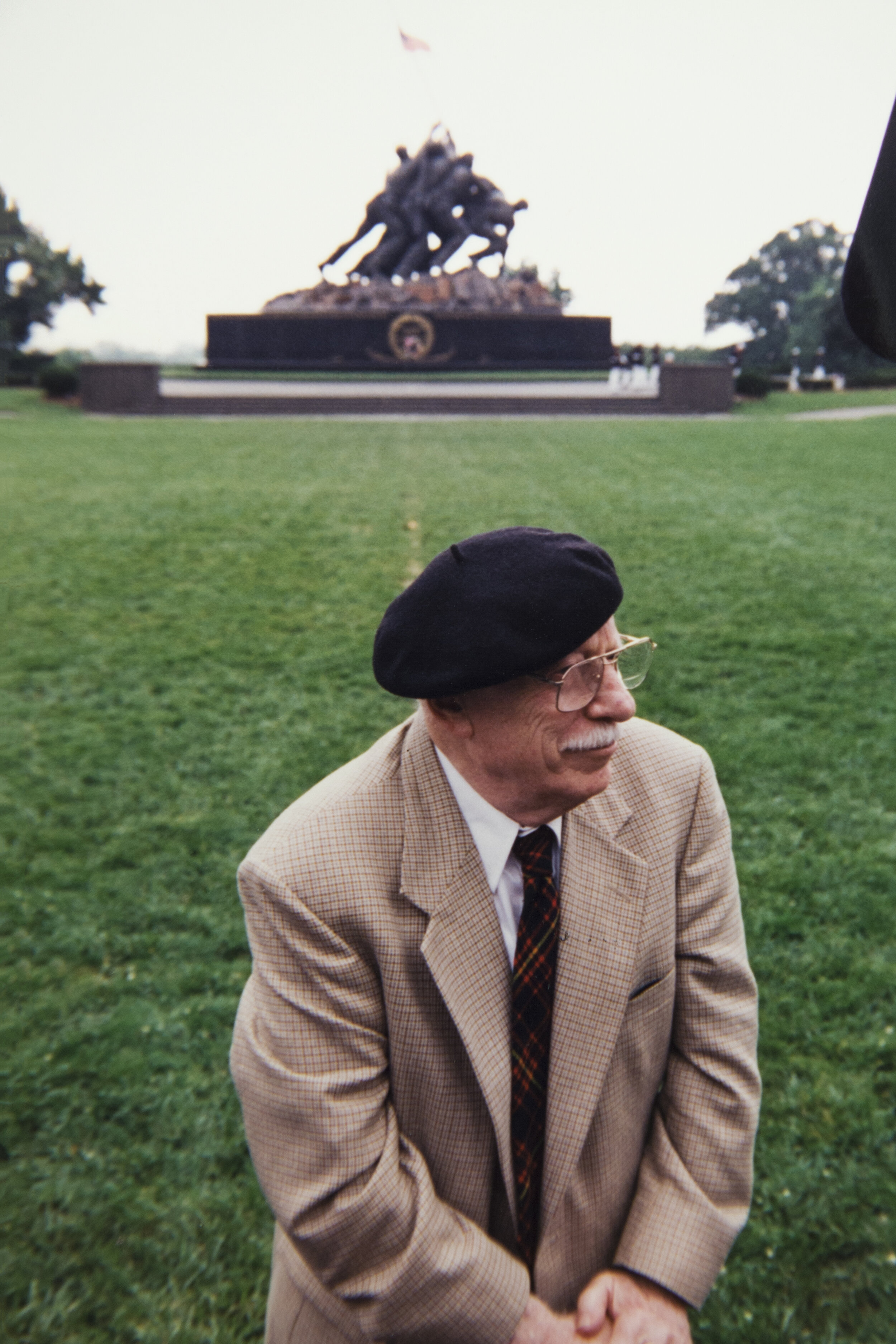Nikon FM2, 24mm lens, Fujifilm 1600 film.
Regrets, I’ve had a few, or so goes the song ‘My Way’ by Frank Sinatra. I try not to dwell on missed photos, or missed photographic opportunities, especially when they have been out of my control. I try to move forward. Sometimes, though, I wish I could go back and take another.
In 1995 I attended the National Press Photographers Association’s 50th Anniversary convention in Washington, D.C. At the convention, photographer Joe Rosenthal was honored during a ceremony held at the U.S. Marine Corps Memorial in Arlington, Virginia.
Here was this famous photographer standing in front of the monument based on his Pulitzer-Prize winning photograph of Marines raising the flag on Mt. Suribachi following the battle of Iwo Jima. All the elements were there for me to make an iconic photograph. Iconic to me anyway.
I should give myself credit for having my camera with me, something I didn’t always do back then. I should give myself credit for making the photograph. I should give myself…
But I missed the shot. The hands especially. Why didn’t I shoot wider? I can’t answer these questions from 25 years ago and am still searching for the negatives to see if maybe I did and for some reason only printed the 4x6 image seen above.
The next line of the song goes, ‘but then again, too few to mention.’ Well, maybe there have been more than a few missed photos, but thankfully I somehow manage to get it right more often than not. And maybe it was through experiences like “missing” this photograph and reflecting on that, which has made me a better photographer today.
We can’t go back. We can only prepare for the next assignment. However, we can carry with us all the experience gained from both successful and not so successful assignments. I’m better today, but only because I was willing to accept that I needed to get better.









